
In order to predict the future, without a functioning crystal ball, we have to study the facts and make predictions based in data. This article will look only at data to predict what might happen in the coming months. The data we will be looking at are the traffic that FlightAware tracks, TSA’s daily passenger counts and information provided by companies that use the airlines for business travel.
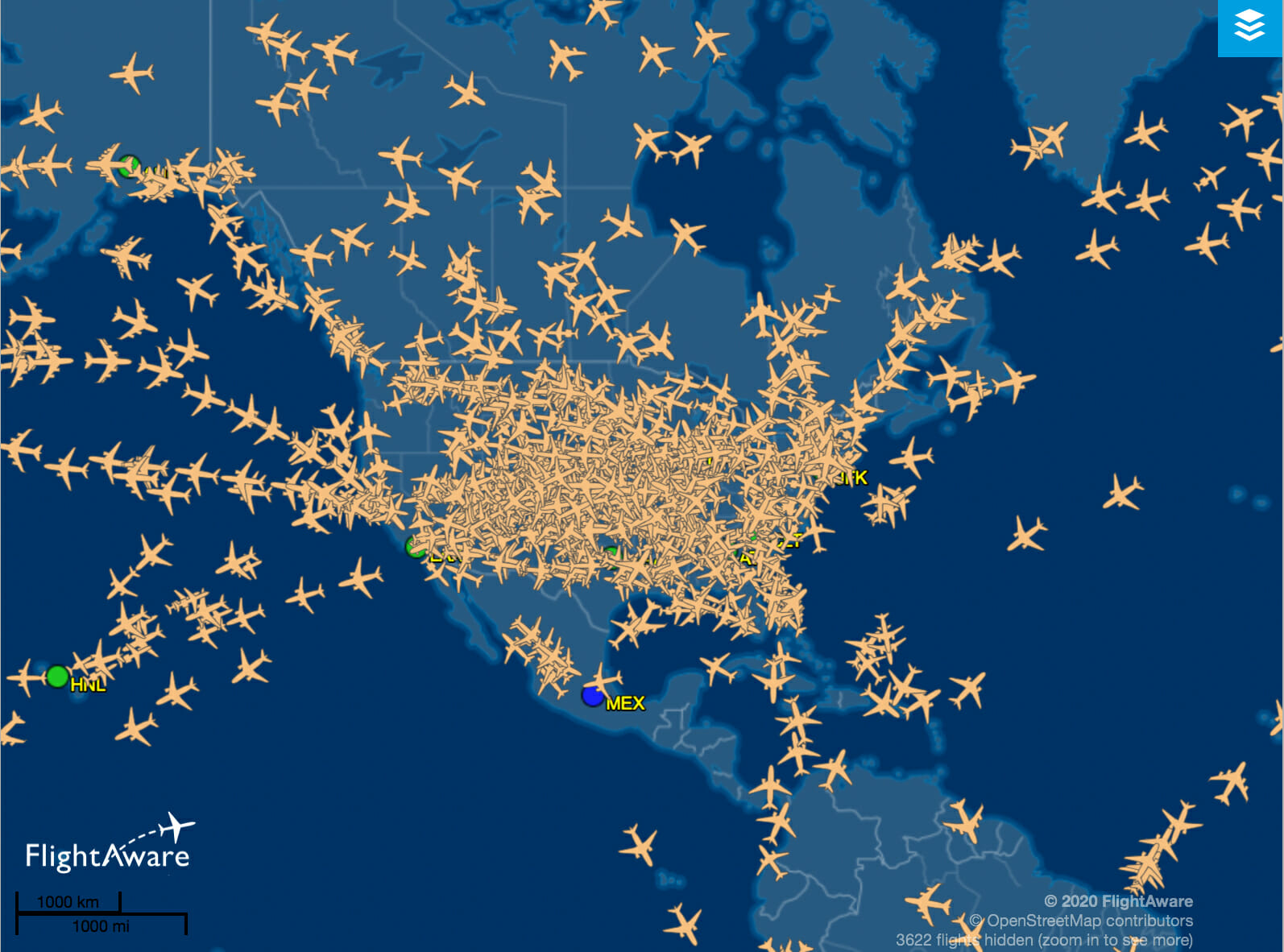
FlightAware Tracking
FlightAware provides weekly updates of their flight tracking results. Their latest results show U.S. Business Aviation is leading recovery efforts. For the first time since the start of the pandemic, on June 20, the numbers surpassed those of the same date of 2019. This is great news for our pilots who fly for corporate and private aviation.
…Business Aviation traffic surpassed 2019 numbers…
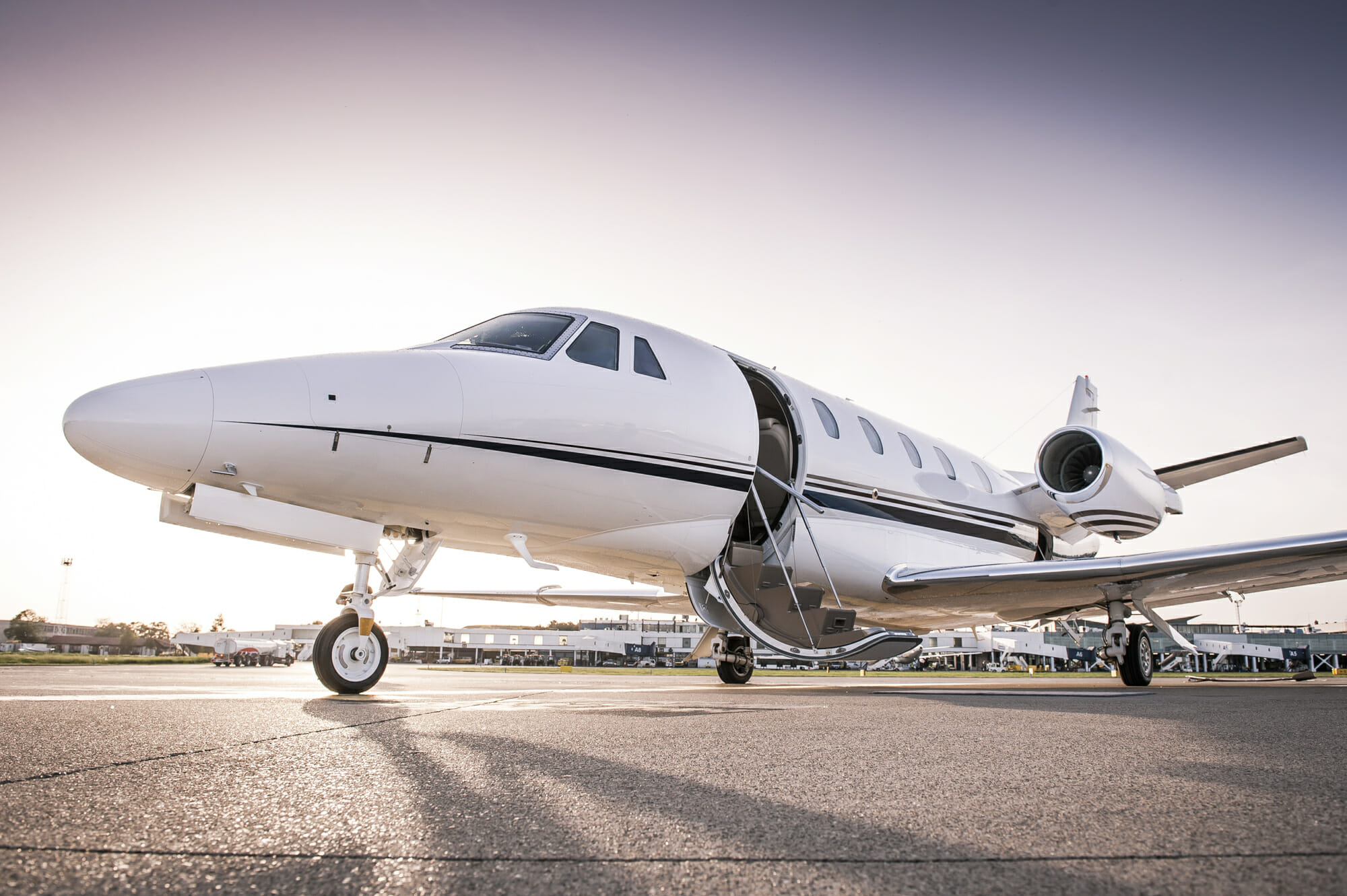
Daniel Baker, CEO of FlightAware said, “Business Aviation is leading the way to recovery in the aviation sector. Weekends, when the travel is related to leisure, are nearly at 2019 levels. With less-trafficked environments where health and safety are more easily controlled, passengers are making significant use of business aviation for work and leisure. Commercial aviation continues its slow and steady climb.” He added, “On Saturday, June 20, Business Aviation traffic surpassed 2019 numbers for the first time since the initial decline with 2.5% more flights than the same day last year. Weekday recovery still has ground to make up but continues to trend upward.”
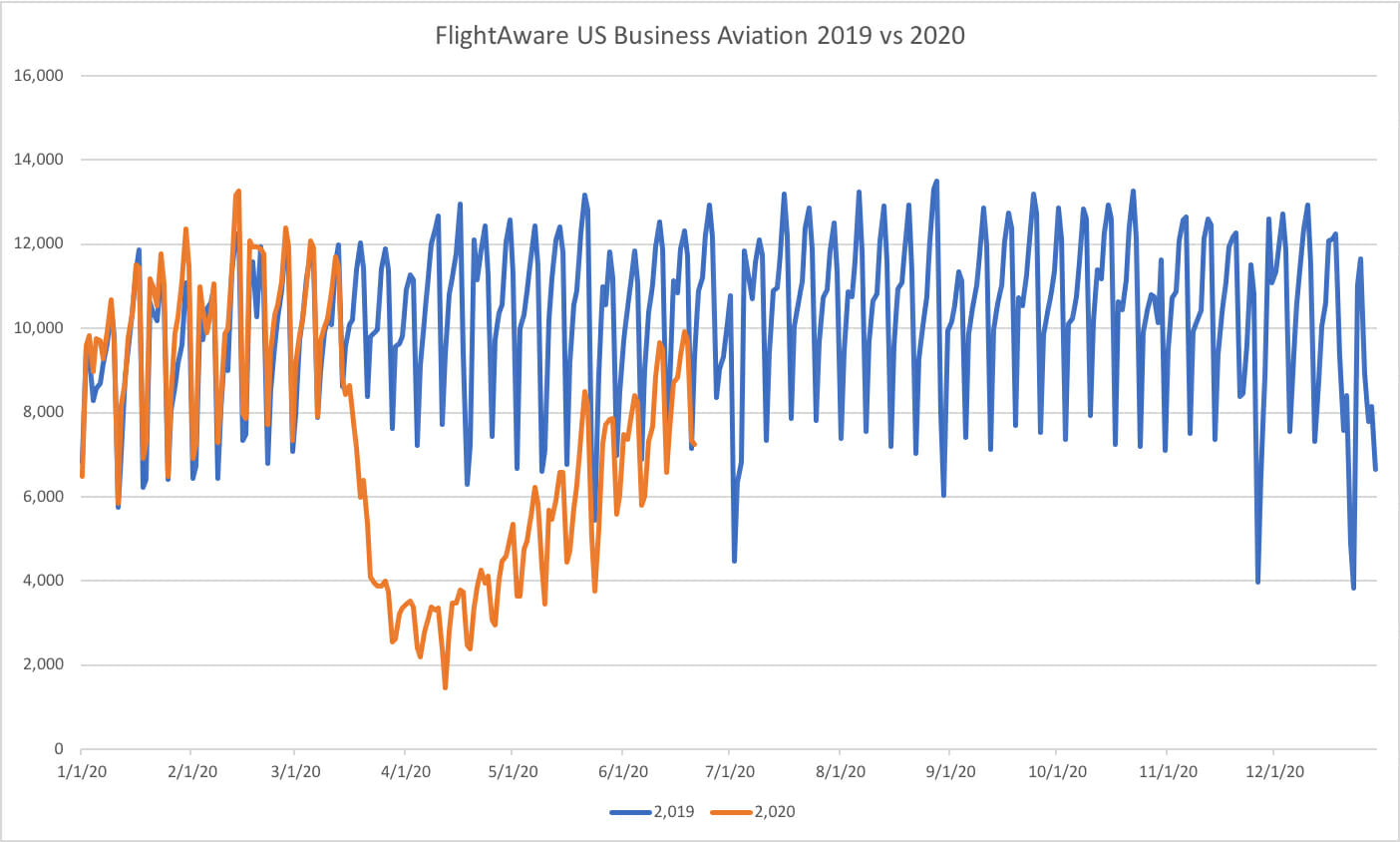
As we can clearly see in FlightAware’s chart above, the private aviation sector is back to flying but the airlines are still struggling.
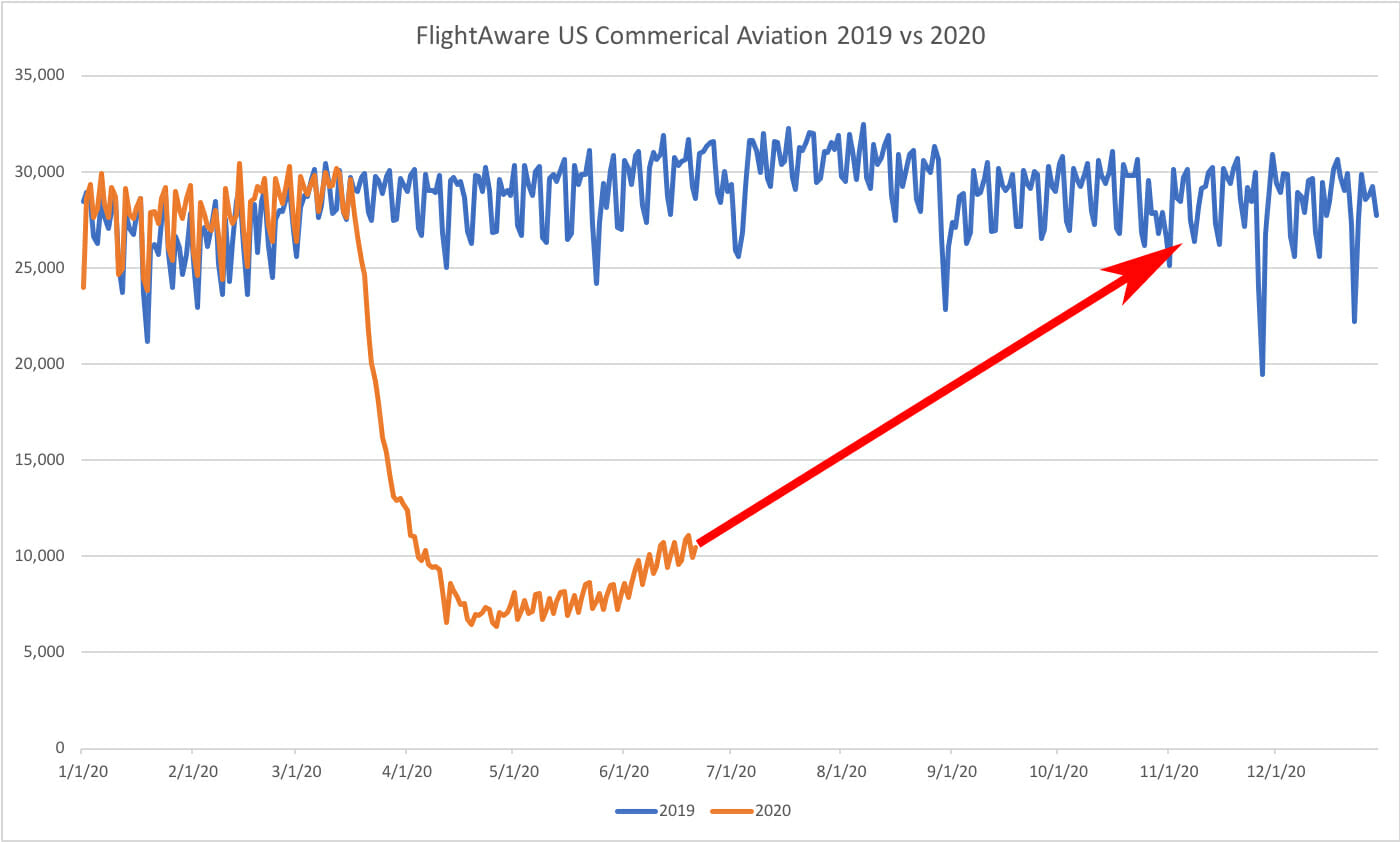
If we project the continued upward trend with the current rise in commercial aviation based on FlightAware’s tracking data, airlines won’t be back up to 2019 levels until October 2020. The problem with this data is that it does not account for the load factors of these aircraft. For a better assessment, we can look at how many passengers are screened by TSA.
Data and web screen image courtesy of FlightAware (flightaware.com)
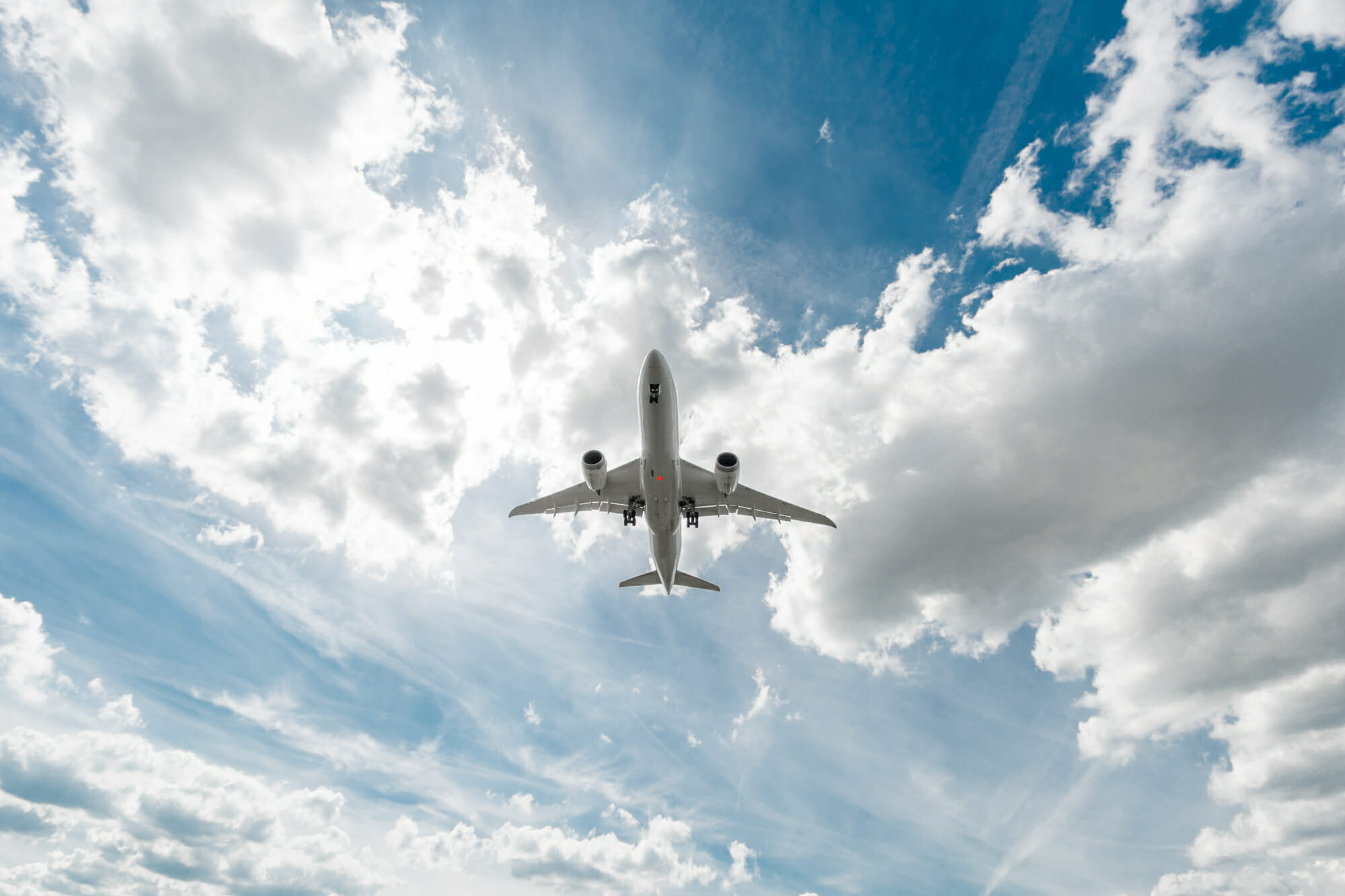
TSA Screened PAX Numbers
If you’re the least bit concerned about commercial aviation coming back, you’ve likely bookmarked TSA’s website that compares counts of 2019 and 2020 passengers who have cleared airport security. If you’re like me, you’re checking it several times a week. (https://www.tsa.gov/coronavirus/passenger-throughput) Graphing TSA’s data from the beginning of the shutdown shows a steady rise in passengers traveling. By extrapolating, we can see this steady rise would continue as long as we continue to return to normal. But will we? Business travelers may not return to the travel that we used to see, especially if CEOs have seen the costs savings that are possible with Zoom or Microsoft Team meetings. In my opinion, sales reps will continue to travel or they would likely lose their sales to competitors who do travel to meet and entertain new clients. Unfortunately for our data analysis, TSA doesn’t separate leisure travelers and business travelers.
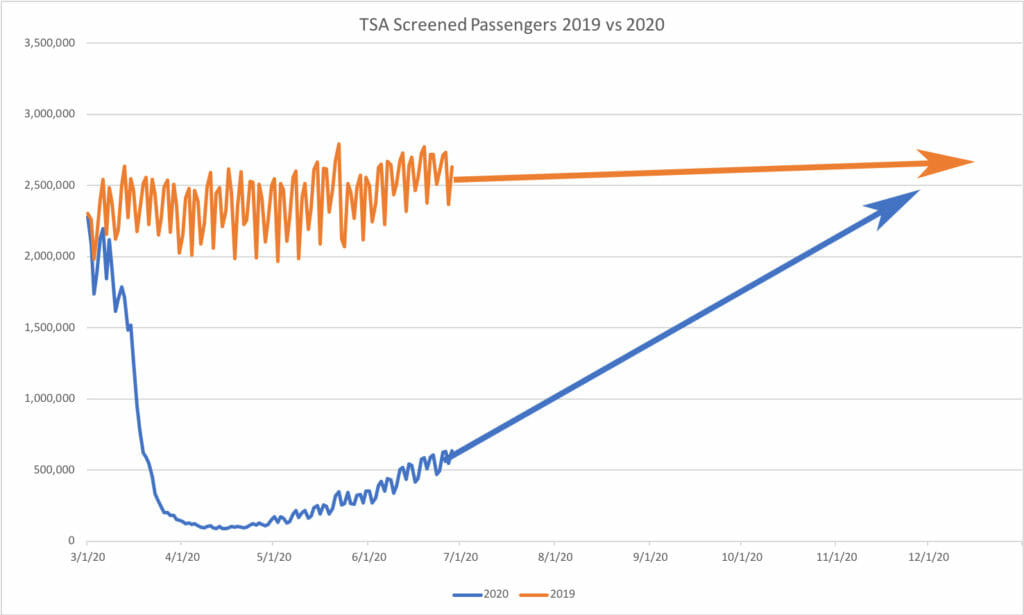
What the Companies are Saying
We understand that business travelers are a huge part of airline passengers, so we polled the top 100 companies (according to Business Travel News, 2019, https://www.businesstravelnews.com/Corporate-Travel-100/2019) with the highest U.S.-booked dollars spent with airlines to find out when they expect to return to the skies. We were shocked that so few responded with comments and quotes about their company’s new travel policies. Here are some of the (unedited) responses that we received:
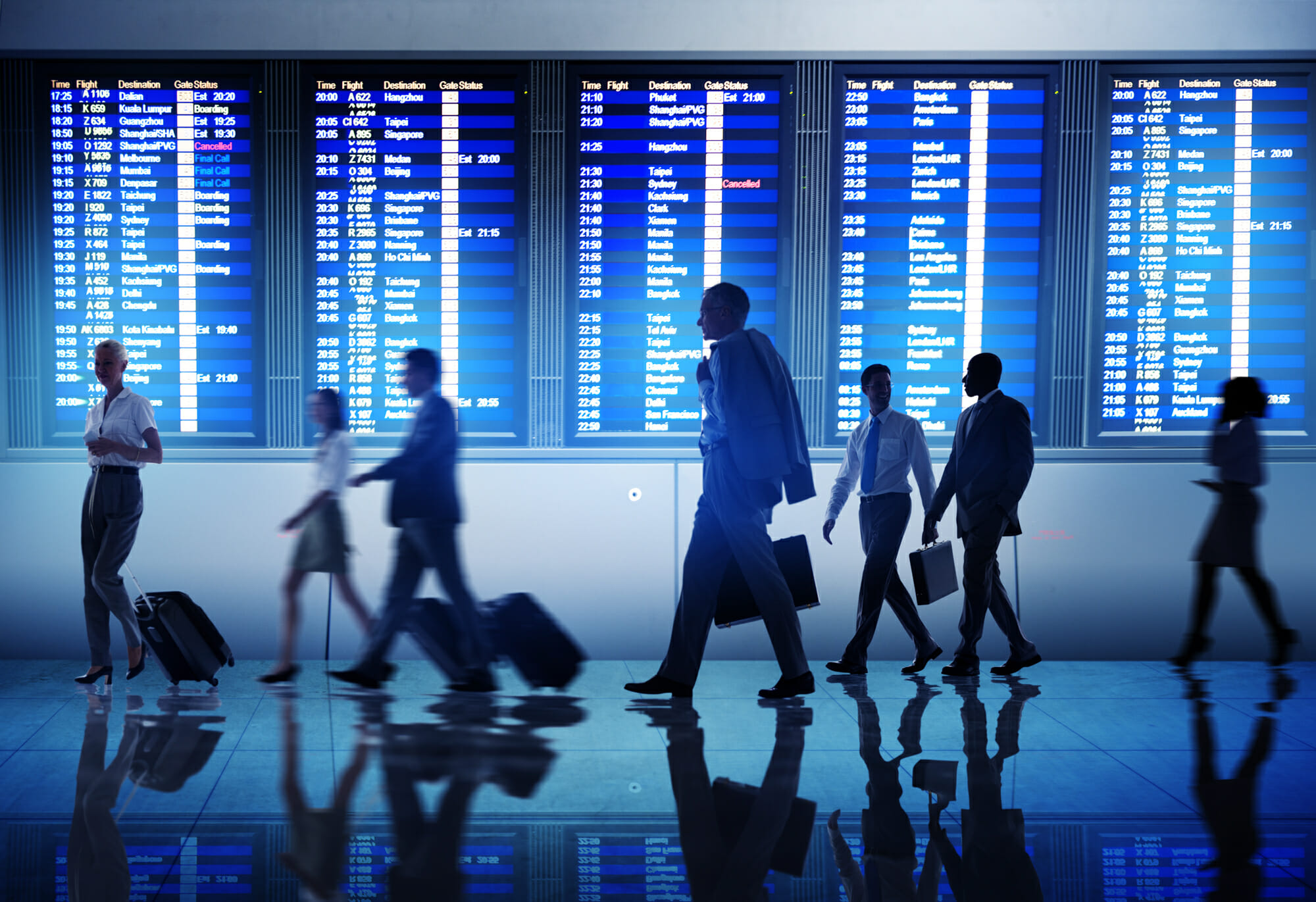
“Shell has a general (air) travel restriction in place until September 30th.” – Shell
“Siemens advises in general against all business travel until further notice. Travel should either be postponed to a later date or replaced by Circuit meetings. If business trips are nevertheless performed, it must be especially clarified if the risk of serious illnesses speaks against the trip. The health and safety of our employees and partners are always our top priority. Of course, we follow all local and country specific regulations including with respect to air travel.” – Siemens.
“As a precaution, we have limited nonessential international business travel. We continue to monitor the situation closely and are working to ensure that our employees have the information and resources they need to stay safe.” – Intel Corporation.
“Roche advises its employees to only conduct business critical travel. Special attention must be paid to the specific travel restrictions issued by the country of origin and destination. We are closely following the COVID-19 situation and development at a global level and may adjust travel recommendations in case of significant changes. In addition to this guidance, we provide our employees with a travel health pack and 24/7 access to global medical and travel security advice.” – Roche
“We have limited international and domestic travel, and visitors to our locations unless necessary for business.” – Lockheed Martin
It’s pretty safe to assume that businesses will continue to follow the CDC and WHO guidelines unless it is deemed absolutely necessary for their employees to travel. Safety is everyone’s top priority during this worldwide pandemic.
The Lockdown
While the U.S. is starting to open up with many businesses resuming and lockdown restrictions being lifted in some areas, several countries are not allowing any travelers into their countries – a fact that has a huge impact on the airlines that serve those countries.
In Conclusion
While we can only speculate what the coming months will bring, based on current trends, the forecast looks positive. Unfortunately, with the ability of many in business to work remotely, the airlines likely will not see pre-COVID passenger numbers for quite some time – maybe never. Is it time for the airlines that rely on business travelers to refocus their efforts on leisure travelers?





























































































































